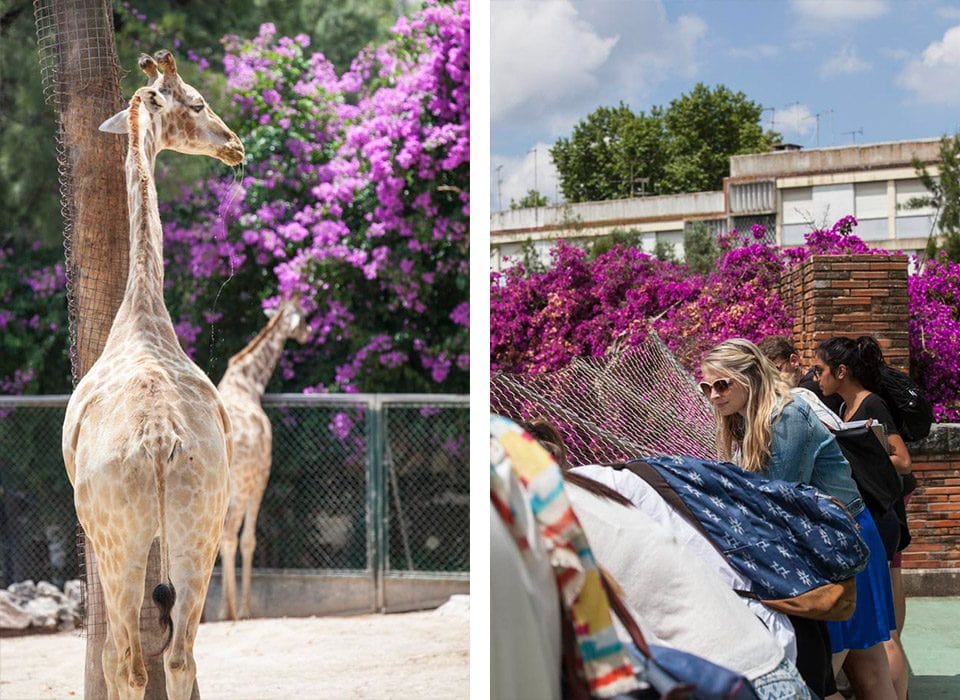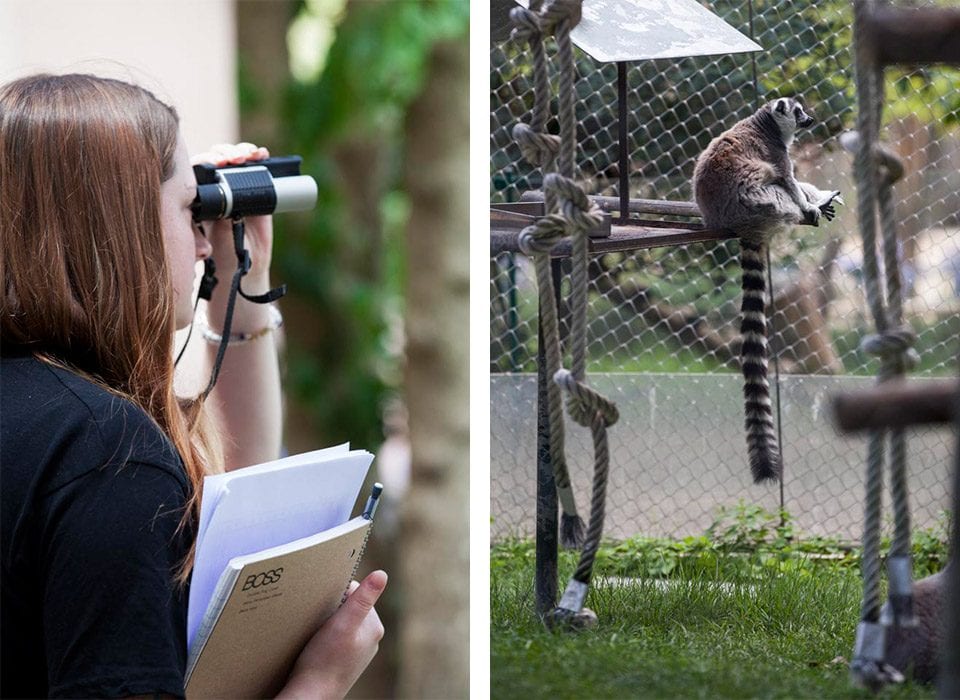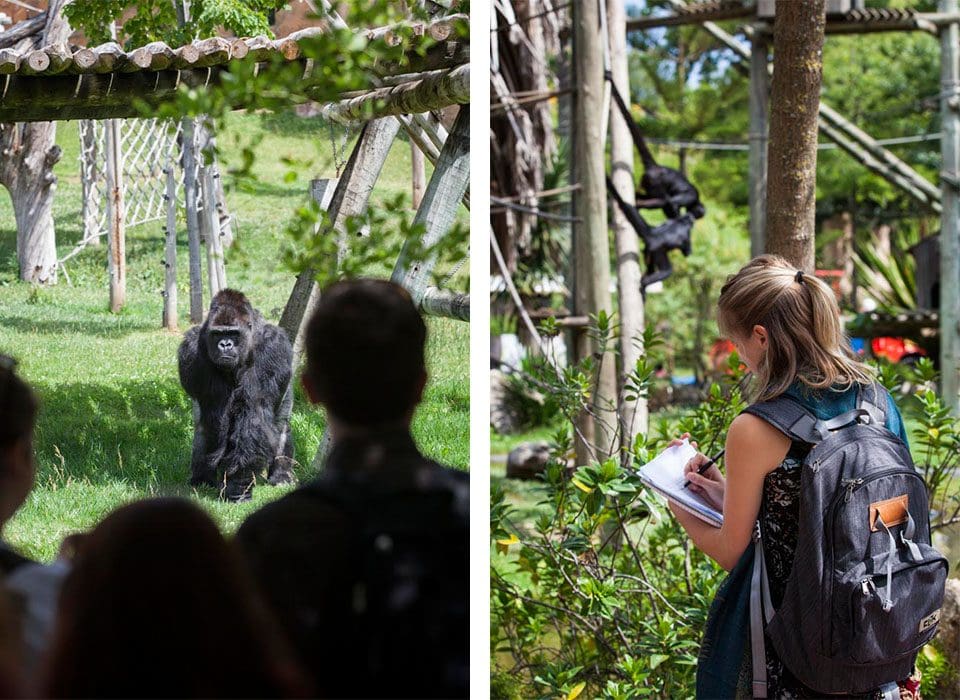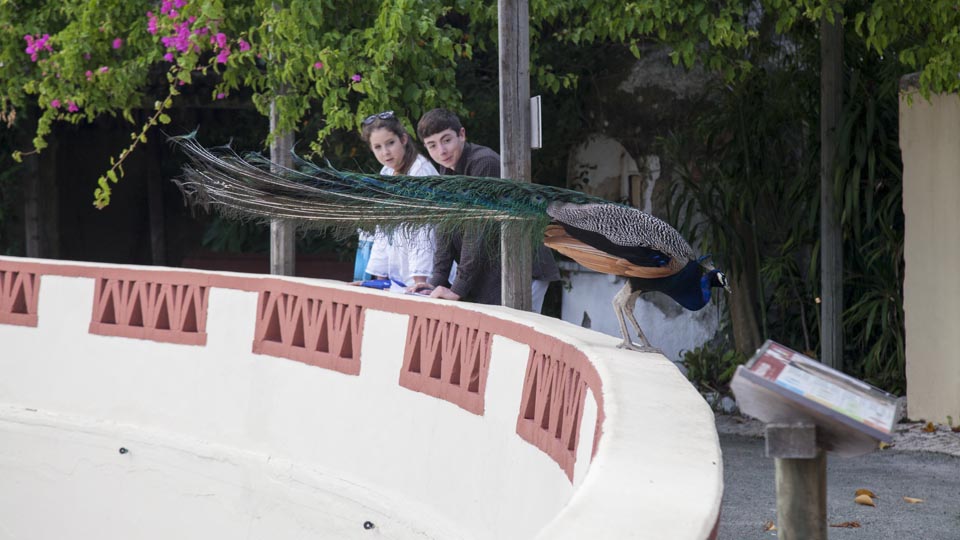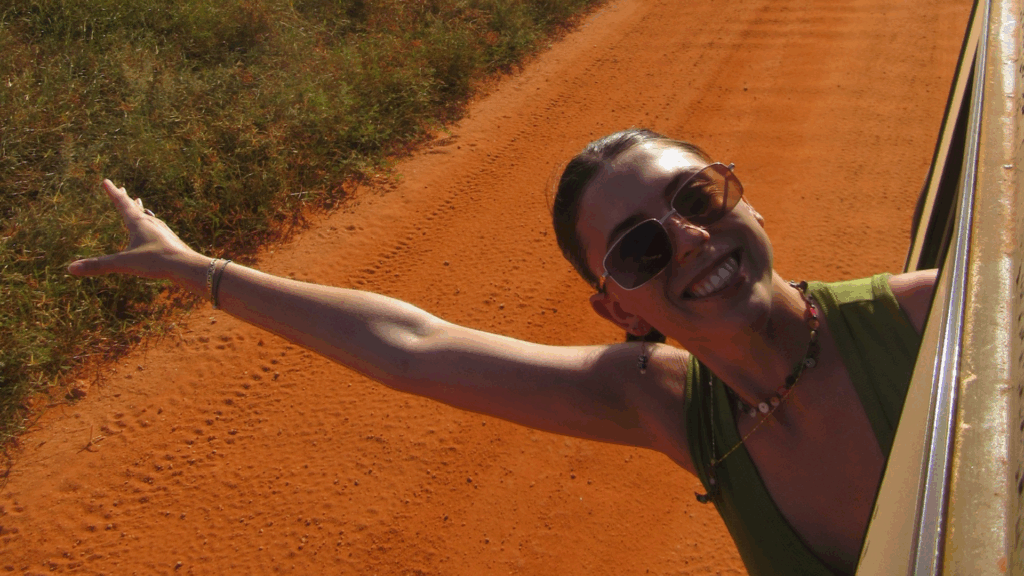The Jardim Zoologico, known as the Lisbon Zoo, is a lush, green gem tucked amongst the red-tiled rooftops of Lisbon proper. Opened in 1884, dating it as the fourth oldest zoo in Europe, the Lisbon Zoo houses 2,000 animals of 332 different species, including many rare animals. The zoo is one of 300 in the European Endangered Species Program, whose members focus on breeding to reintroduce species back into the wild. Lisbon Zoo has reintroduced four species back into the wild from their breeding program: the Black Rhino in South Africa, the Arabian Oryx in Qatar, the Addax in Tunisia and the Persian Leopard in Sochi, Russia.
This progressive zoo was the ideal setting for a Field Lab for Dr. Emilie Rissman’s Hormones and Health biology class. Students toured the animal enclosures and the veterinary clinic, before settling in to observe and take notes on the primates’ habits to discuss in a follow-up class.


